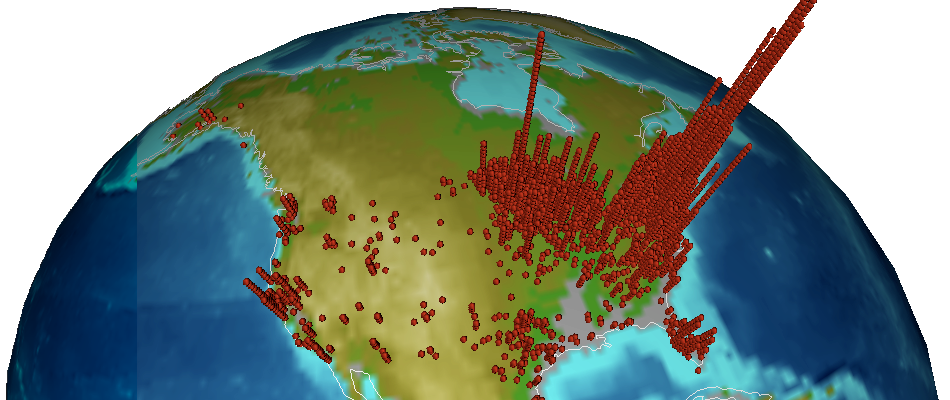Geospatial-temporal visualizations
Related publications:
- Tuan Dang, Leland Wilkinson, and Anushka Anand. Stacking Graphic Elements to Avoid Over-Plotting. IEEE Transactions on Visualization AndComputer Graphics 16(6), InfoVis 2010.

 DOI
DOI


Visualizing UFO sightings on a 2D map: This project uses data from the National UFO Reporting Center available here.
The goal here is to give the user a higher level view of where different types of sightings occur, and to detect patterns/trends of these sightings over time.

Visualizing the distribution of Lyme diseases in 3D reported in
the U.S. in 2005, 2006, and 2007 by the CDC. One might argue that a county-level choropleth map would
be a suitable presentation. Nevertheless, it would be hard to argue that a county-level choropleth map using hue
or brightness could reveal the threefold increase in Lyme disease cases centered around New England vs. the Midwest.





